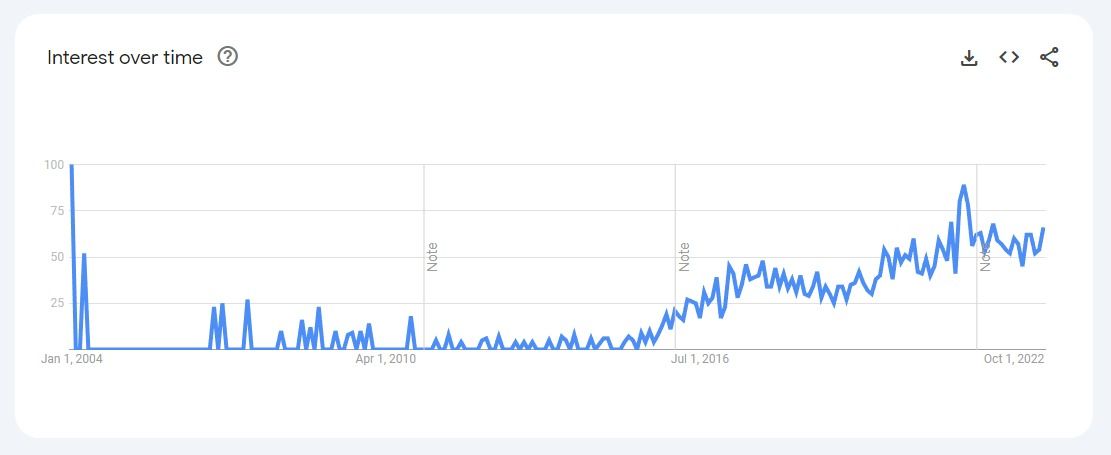ABM started out as a B2B marketing strategy involving one-to-one targeting where individual accounts are distinct segments. Over time, the idea has mutated into an amorphous concept that can be boiled down to mean modern B2B marketing. I agree with the frequently made claim that "ABM is just good B2B marketing." I would consider 6sense the leader in this space, and they support this sentiment. They also hardly mention ABM on the homepage of their website.
That said, if the term helps individual companies approach key accounts more effectively, more power to them. The problem is that the ambiguity around ABM has negative implications for the positioning and strategy of major software providers in the industry. It makes it more difficult for B2B companies to interpret what these software providers are offering. "B2B Marketing Platforms" is a much better term to categorize software like 6sense, ZoomInfo, and Terminus.
A Really Short History of ABM
Most people agree that the first person to formally package the concept of ABM was Beverly Burgess in 2003 when she wrote "A Practitioner's Guide to Account-Based Marketing." This book caused an initial blip in interest, but interestingly, the concept died and sputtered until 2015:

In 2015, interest in ABM spiked after VCs got excited about software platforms like Demandbase and Engagio. The number of software vendors and interest in the term has continued to grow from there.
ABM's Suspicious Evolution From One-To-One to One-To-Whatever
I tried to write a post that would synthesize the various definitions of account-based marketing. Minutes before lodging my keyboard into the drywall on the other side of the room I decided to stop.
The definitions of ABM are all over the place. It's a mess. It started out as a one-to-one strategy where each key account was treated as a distinct target market. That's where it should have stayed. Over time, both software vendors and practitioners have been expanding the definition to include more one-to-many messaging strategies. ITSMA's even added a new kind of ABM called "Programmatic ABM," which is a one-to-many targeting strategy that is functionally the same as modern B2B marketing. Programmatic ABM is what the top software providers in this category are really offering. Let's pray they never adopt that term.
Why ABM Mutated Into B2B Frankenstrategy
A big driver of this mutation was the introduction of ABM software. Leaders in software categories don't want to be a component. They want to be the platform. One-to-one targeting only makes sense as a component of a marketing strategy. You can't be effective in a B2B market if you limit your strategy to only include one-to-one efforts. However, if you expand ABM to include one-to-many messaging, it loses any distinct features and causes confusion.
What Does This Software Actually Do?
The term ABM doesn't mean much today, but what about the software in this space? Is there a real software category here? We reviewed a number of "ABM" platforms and found a common group of features that are unique to this category:
- Account Identification: Most of these platforms deanonymize website traffic to reveal additional firmographic and contact details. These platforms also include various methods of identifying accounts that match your ideal customer profile. This includes filtered views, account scoring, and predictive modeling.
- Personalization: Using enriched account data, these platforms provide tools to deliver personalized experiences through your website, display ads, email marketing, gifting, and others. A frequently cited example involves showcasing different website content to accounts based on their behavior and status.
- Messaging: Some of the more advanced software in this space offers the ability to automate message timing based on account behavior. Another messaging feature offered by some vendors is the ability to use AI to generate personalized messaging.
- Analytics: These platforms also include unique reports that help highlight account-level behavior and performance.
There is a common set of features here that should be distinguished from CRM, CDP, and general marketing automation platforms. This needs to be called something. The right term is B2B marketing platforms.
B2B Marketing Platforms
6sense, Terminus, and Rollworks are B2B marketing platforms. ABM features involving one-to-one tools might make sense as components of these leading platforms, but the broad classification should be B2B marketing platforms. This term clearly communicates what's being offered to users - a collection of B2B-focused marketing tools. This classification gives software providers the right scope for positioning and reduces confusion.